A Seattle Treasure
In the heart of Belltown, nestled between a hair salon and a Brazilian barbecue joint, sits Sassafras – a little boutique with a big mission.
The first thing you’ll notice about Sassafras is its charm and very unique styles – but there’s so much more than meets the eye at first glance. Let me take you on a tour – I just know you’re going to love it!
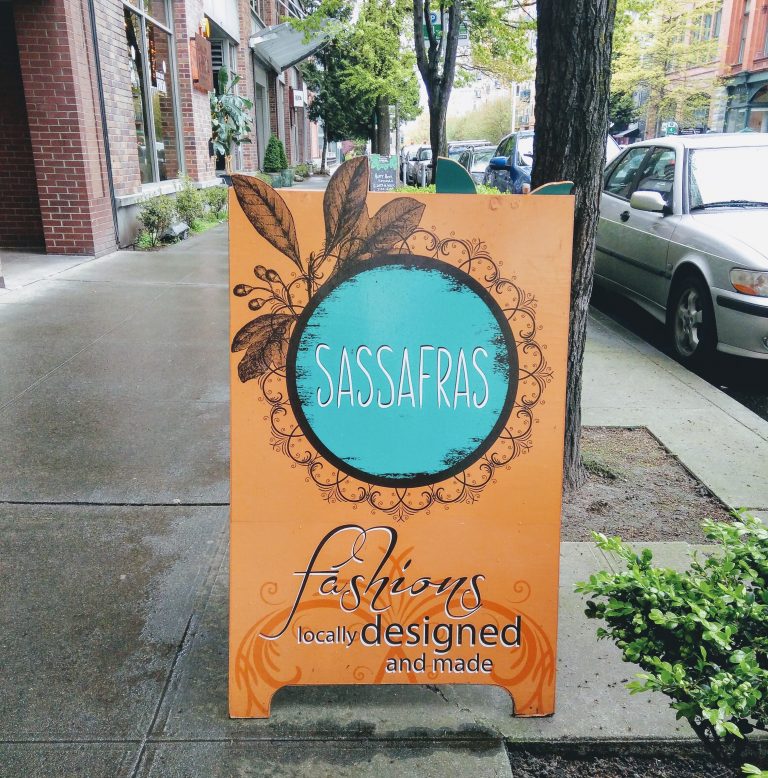
Sassafras Supports Local Designers
Everything sold at Sassafras is made by local designers in the Pacific Northwest, spanning from Vancouver, B.C. to Portland, Oregon.
That’s right…made locally, by hand.
Currently, about 60 different designers contribute to the curated clothing, jewelry and accessories, each with very distinct personality and flavor.
You can find a wide range of clothing styles, from pieces with a distinct vintage feel (you know that’s what hooked me!) to pieces that are modern and edgy.
Elegant and classic jewelry you can wear everyday…
And memorable statement pieces!
Need a new handbag? Yep, Sassafras has those, too, all made locally!
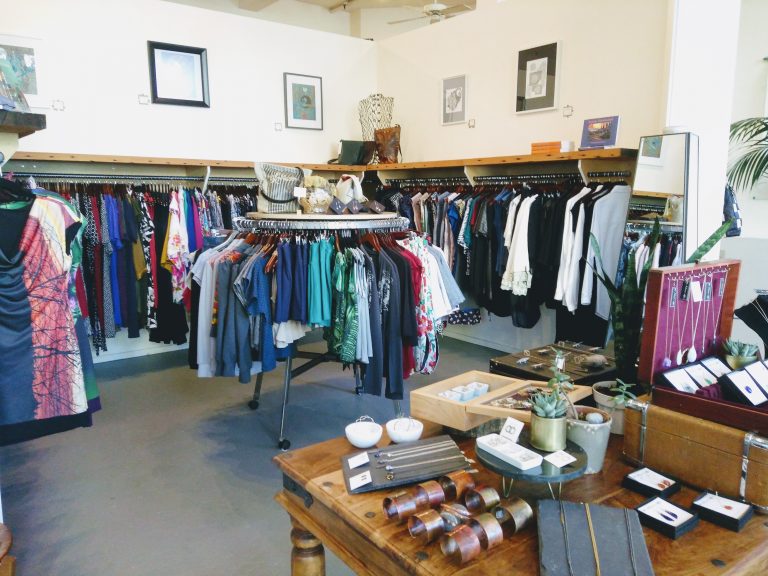
It Doesn’t Get Much More Local Than This
While you’re perusing the beautifully handcrafted fashion, keep your eyes peeled for the top of a spiral staircase. Though you may not get to see what’s at the bottom of the stairs, you should know that’s where much of the magic happens.
Below the retail shop is a huge studio space where seven Seattle entrepreneurs design and manufacture clothing and jewelry. In fact, 50% of Sassafras’ inventory is supplied by folks who make it all in house!
On my most recent visit, I was invited to go down and check it out. Let me show you!
(I really love spiral staircases.)
The space is huge! Each designer has her own designated space and they all share the giant table in the middle of the room.
Malia Peoples from Other Peoples Polyester was busy at work when I dropped in.
Here’s Malia with some pieces she’s readying for a pop up shop. (See the yellow t-shirt on the left with the pink ruffle sleeves? I think I’m in love.)
As you can see, each item at Sassafras is a piece of art and has a unique story behind it. That’s one of my favorite things about it! Additionally, Sassafras encompasses some of the best of Seattle’s ideals: supporting local businesses and supporting women-owned businesses. Sassafras customers can shop in a charming boutique and purchase items by talented designers made in the very same building.
So who is responsible for this concept and how did it come about?
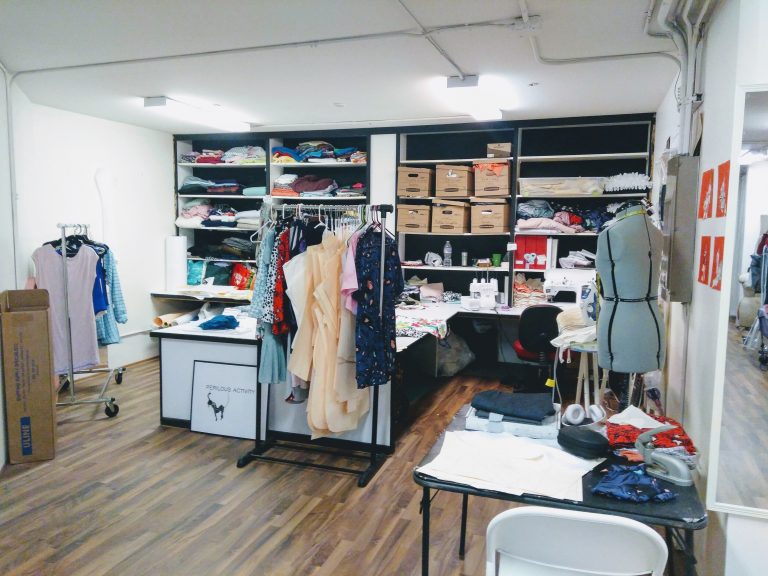
Meet Amy Tipton
I met Amy a few years ago on my very first visit to Sassafras and immediately developed a deep admiration for her and for her work. As a customer it’s incredibly cool to meet the business owner, and Amy’s obvious conviction for her shop’s mission made the experience even more exciting.
I’ve always wanted to know the full story, so last week, over tapas and a bottle of wine, Amy shared the story of Sassafras!
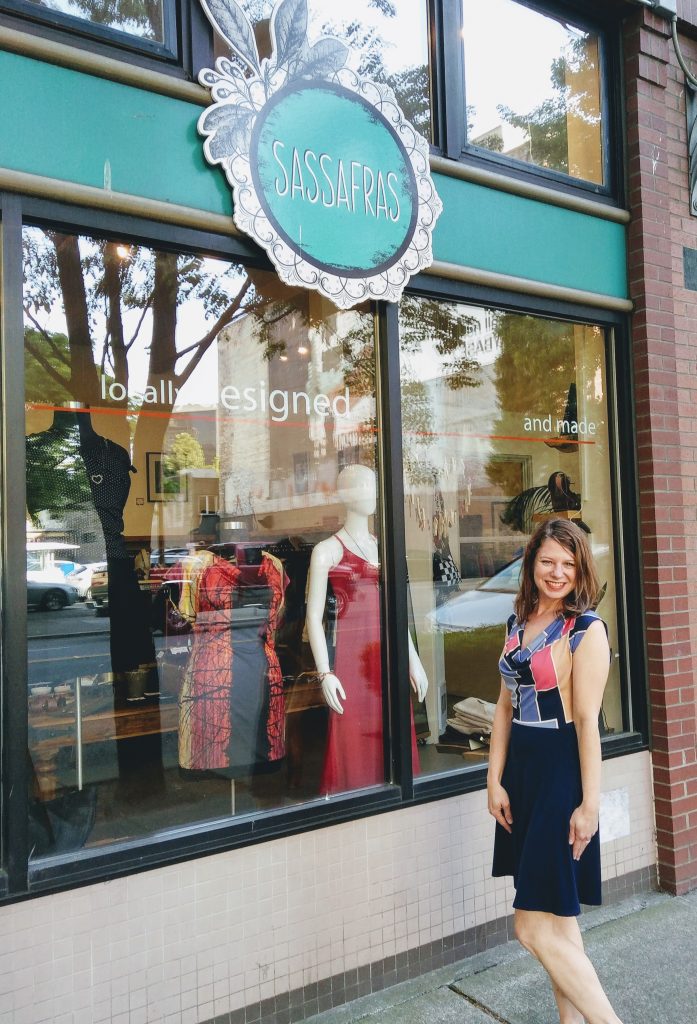
The Inspiration and Concept
Interestingly, Amy’s professional background is not fashion or retail, yet her experiences all contribute to Sassafras in fascinating ways.
Years ago, Amy worked in a publishing house which was staffed almost entirely by women. She loved her job, but really disliked the culture. “The women were horrible to one another. Very competitive and talked behind each others’ backs. It was really unhealthy.” She eventually left the publishing job for Microsoft’s learning division, where she spent several years working tirelessly in several different roles.
Right around her twelfth year at Microsoft, Amy looked around realized she hadn’t meant to be there quite so long! In that moment, she made a decision to do something with more intention and meaning: she was going to pursue her passion. “I started sewing when I was seven years old,” Amy told me. “I’ve always loved it. Throughout high school and college – and even after that – I always made my own clothes.”
Without knowing precisely how her dream would take shape, she was committed to making something happen, so Amy began setting aside part of her salary. She also began researching and dabbling in the fashion industry to see if it was something she really wanted to do. Every weekend, Amy and her good friend, Carrie, set up shop at various flea markets in the city, pedaling vintage clothing.
The inspiration for the Sassafras concept struck her at one particular flea market. She noticed a designer, Gwen Stubbs of Lekkerlife Clothing, trying to sell stunningly beautiful dresses priced over a hundred dollars. “It’s really difficult to sell something at that price at a market.” Most customers at flea markets don’t want to drop that kind of cash. And since these small business designers aren’t making hundreds of dresses to sell through large retailers like Nordstrom, they really didn’t have a good home for their product.
Amy realized she could be the one to provide that home.
Making the Concept a Reality
Once Amy had the concept, she knew she was going to leave Microsoft in very short order, so she pursued her vision with vigor. She recalls doing a lot of business on her phone from the Microsoft parking lot, scheduling weekend tours of retail spaces and gathering designers. She found many of her initial designers by scouring Etsy, going to the markets, craft fairs, and through Malia, who had been one of Amy’s teacher’s at the New York Fashion Academy.
When Sassafras first opened in Belltown, Amy was 18 designers strong. Today, she sells products from 60 designers! (You can find a list of the current designers on the Sassafras website.) She’s also changed the way she finds designers. These days, Ms. Tipton does a lot of student recruiting. “Those students have their minds wide open. They haven’t been boxed in yet thinking, ‘I have to sell this.’” Additionally, the designers who currently sell through Sassafras are always on the lookout for new talent that fits the vision.
An inspiring byproduct of the Sassafras business model is that it cultivates female entrepreneurs.
I never thought about it until a customer mentioned it to me, but all the designers are women. It wasn’t a goal, but that’s how it worked out.
Sassafras has been in business for four years now and is a beloved Belltown staple.
Applying Past Lessons
As a woman in tech and a small business owner, myself, I was eager for Amy to share how her background contributes to the way she runs her shop. The answer? In so many ways!
Before she left Microsoft, Amy deliberately took advantage of the opportunities the tech company had to offer. She signed herself up for projects that would teach her valuable skills she could apply at Sassafras, such as public speaking, managing a large budget, and managing people who didn’t directly report to her. “I thought of it like school!” And it shows. She’s handling her own accounting, working with designers daily on many levels, and able to talk with anyone at anytime about Sassafras.
Another tech practice she carried over is quarterly reviews…for the designers! She analyzes the last three month’s sales and goes over it with each designer so they are empowered to make informed decisions about what to make and sell. Sometimes it’s hard for artists to look at the data, she observes. “They may find the thing they hate to make is the best seller.”
Amy never forgot the unfortunate cultural experience from the publishing house and deliberately created a very different environment. It’s collaborative and supportive. “We love each other. We help each other and celebrate each others’ successes. It’s a great community.” And even as a customer, I can feel it when I walk through the door. Everyone is happy, welcoming, and enthusiastic about their craft.
The Challenges and the Rewards
When I asked Amy to describe the most challenging part of her business, her answer was true to the core and culture of Sassafras: she hates turning away vendors. There are a couple reasons Amy may have to turn down a vendor – either the product doesn’t quite fit in the store or the designer’s business isn’t in a place to start wholesaling. Either way, Amy strives to to say “no” in a way that does not discourage the designers from continuing to make their pieces. She loves it when folks she’s turned down are able to come back later with a product she can sell.
According to Amy, the rewards are two fold.
First, the customers. It’s incredibly rewarding when a happy customer leaves the shop, only to return at a later date with a friend…and then that friend brings a friend. She also loves the moment the customers realize that everything is truly local.
“It’s magical for the customers when they realize the clothes were made downstairs. You can see the sparkle in their eyes when they get that a person made this.”
The second big reward for her is watching the designers succeed. She gets to witness (and help) designers in all phases of growth, from the early prototype stages to having wholesale accounts and look books.
What’s Next?
Amy has two big goals for Sassafras this year. The first she describes as “more focus on the people who are making the clothes.” This is evident the store’s very active social calendar where she schedules in-store events to feature individual designers. You should follow the Sassafras Facebook page to be in the know! (On a personal note, I LOVE these events. I get to meet the people who make the clothes and ask questions. Also, there’s wine.)
Growing the online store is her second major goal. Many of the designers’ businesses are maturing. They now have professional photographs and streamlined production processes, making a web store the next logical step. While maintaining it is a lot of work, “almost like having another business”, Amy has already started to see some success from it. Oftentimes, local customers come to the store asking for very specific pieces they saw on line. The web store has also made it possible for Sassafras to sell to folks in other states! (You should check out the online store! Specifically the BoHo Republic dresses. Will someone please go buy them all before I do???)
Take some time this summer to check out Sassafras and meet the woman who made it all happen. Or, if you find yourself in West Seattle, she’s got a Pop Up Shop at Virago Gallery until the end of May. Rumor has it, the Pop Up Shop will have some unique pieces not featured in store…
Thank you for sharing your story, Amy! I can’t wait to see what’s in store for the next four years!


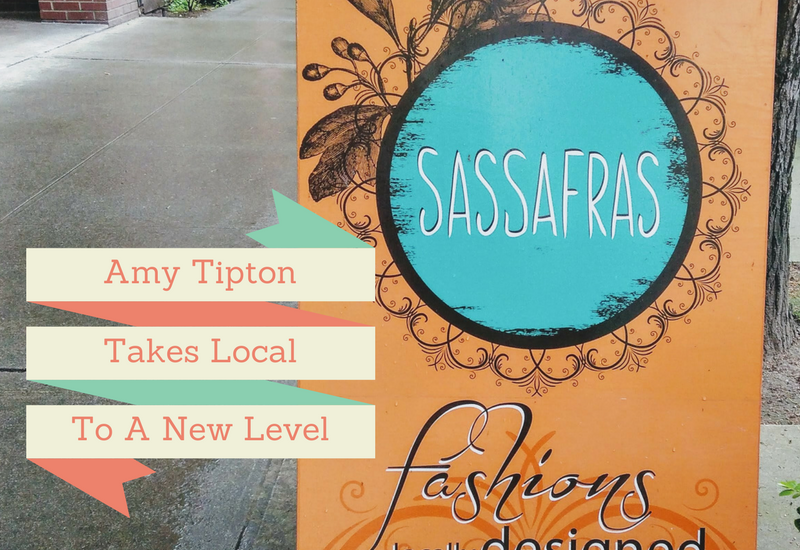
Leave a Reply